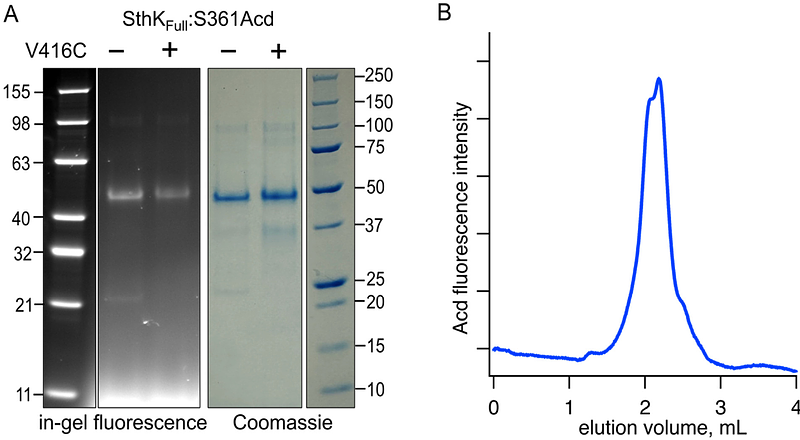Domain Coupling in Allosteric Regulation of SthK Measured Using Time-Resolved Transition Metal Ion FRET

Domain Coupling in Allosteric Regulation of SthK Measured Using Time-Resolved Transition Metal Ion FRET
Eggan, P.; Gordon, S. E.; Zagotta, W. N.
AbstractCyclic nucleotide-binding domain (CNBD) ion channels are vital for cellular signaling and excitability, with activation regulated by cyclic adenosine- or guanosine-monophosphate (cAMP, cGMP) binding. However, the allosteric mechanisms underlying this activation, particularly the energetics that describe conformational changes within individual domains and between domains, remain unclear. The prokaryotic CNBD channel SthK has been a useful model for better understanding these allosteric mechanisms. Here, we applied time-resolved transition metal ion Forster resonance energy transfer (tmFRET) to investigate the conformational dynamics and energetics in the CNBD of SthK in both a soluble C-terminal fragment of the protein, SthKCterm, and in the full-length channel, SthKFull. We incorporated the noncanonical amino acid Acd as a FRET donor and a metal bound to a chelator conjugated to a cysteine as an acceptor. We used time correlated single photon counting (TCSPC) to measure time-resolved FRET and fit the TCSPC data to obtain donor-acceptor distance distributions in the absence and presence of cAMP. The distance distributions allowed us to quantify the energetics of coupling between the C-terminal domains and the transmembrane domains by comparing the donor-acceptor distance distributions for SthKCterm and SthKFull. Our data indicate that the presence of the SthK transmembrane domains makes the activating conformational change in the CNBD more favorable. These findings highlight the power of time-resolved tmFRET to uncover the structural and energetic landscapes of allosteric proteins and of the ligand-mediated mechanism in CNBD channels specifically.